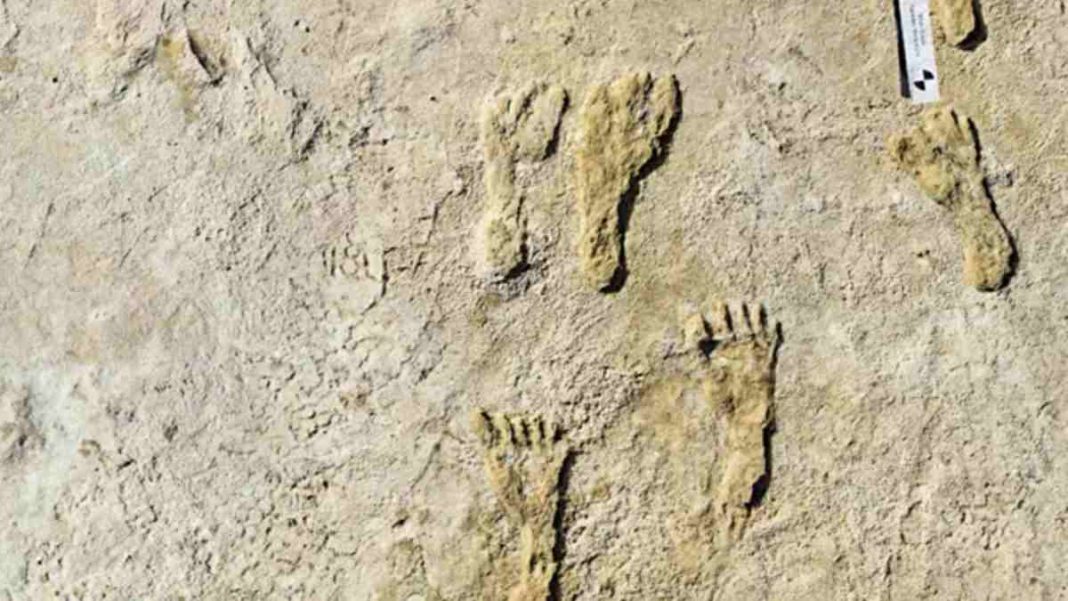MEXICO: A recent study has reaffirmed that fossilized human footprints discovered in New Mexico are likely the oldest direct evidence of human presence on the continent.
The footprints, found at the edge of an ancient lakebed in White Sands National Park, were initially dated to between 21,000 and 23,000 years ago, as reported in the journal Science in 2021.
However, concerns were raised about the accuracy of the dating methods used, specifically the possibility that the seeds of water plants utilized for dating may have absorbed ancient carbon from the lake, potentially leading to unreliable radiocarbon dating results.
To address these concerns and provide further evidence, a new study was conducted, and its findings have reignited the debate within the archaeological community.
The recent study, published in the journal Science, presents two additional lines of evidence that support the older date range of the footprints.
Researchers analyzed ancient conifer pollen and quartz grains found at the site, bolstering the argument for the ancient age of the footprints.
These findings challenge the prevailing belief that humans did not arrive in the Americas until just a few thousand years before the submergence of the Bering land bridge between Russia and Alaska, estimated to have occurred around 15,000 years ago.
Dr. Emily Rodriguez, the lead author of the study, commented on the significance of this discovery: “These footprints provide a direct window into the past and offer undeniable evidence of early human presence in the Americas. If their age is indeed around 21,000 to 23,000 years, it forces us to reconsider established theories about the timing of human migration on this continent.”
The implications of this research extend beyond the scientific community. The study challenges conventional wisdom about the peopling of the Americas and sheds new light on the history of human presence in the region.
Ancient footprints are a rare and valuable find, offering a unique snapshot of a moment in time with no ambiguity about their human origin.
While other archaeological sites in the Americas have suggested similar early date ranges for human presence, the footprints at White Sands are seen as providing irrefutable evidence that could reshape our understanding of the past.
The scientific community will continue to scrutinise and refine these findings, as dating ancient artifacts and footprints remains a complex and evolving field of research.
Nevertheless, if the evidence for the older date range withstands further scrutiny, it could rewrite the history books and fundamentally alter our comprehension of early human migrations in the Americas
Also Read: Newly Discovered Antarctic Strawberry Feather: A Bizarre Marvel of the Deep



